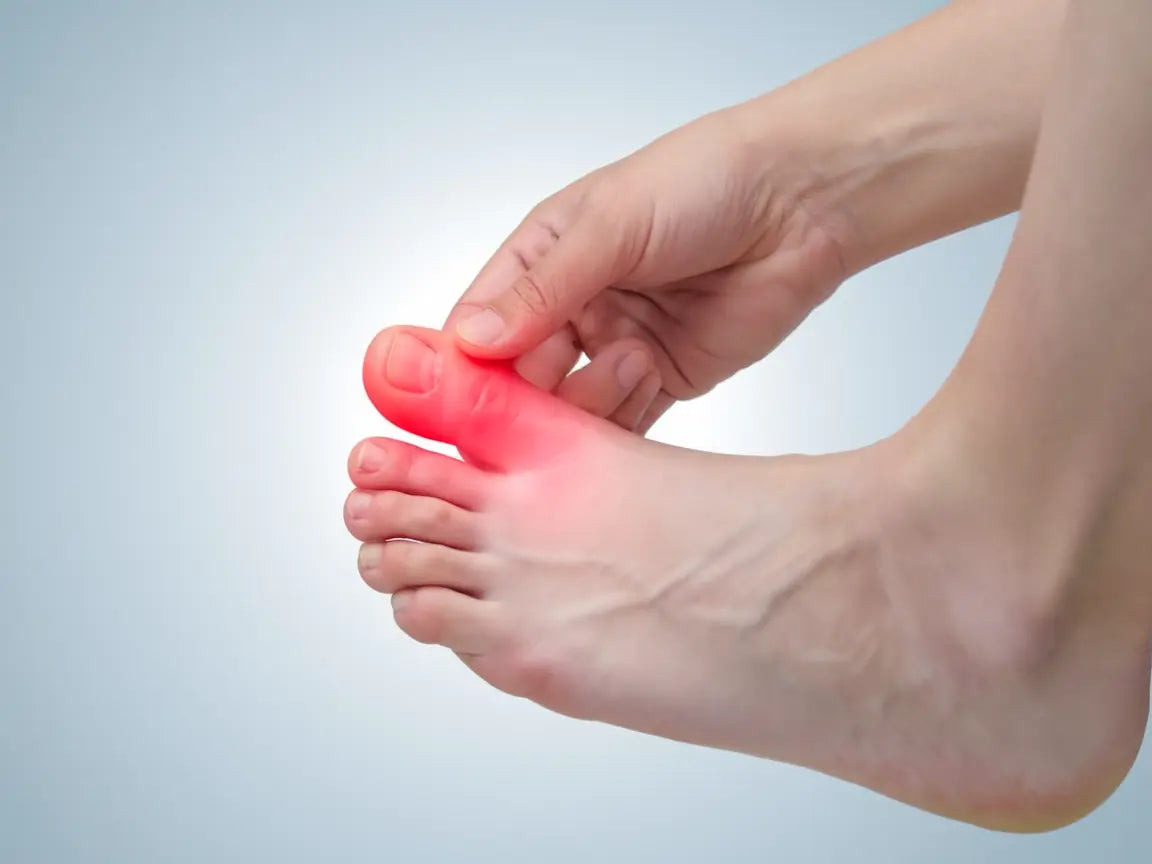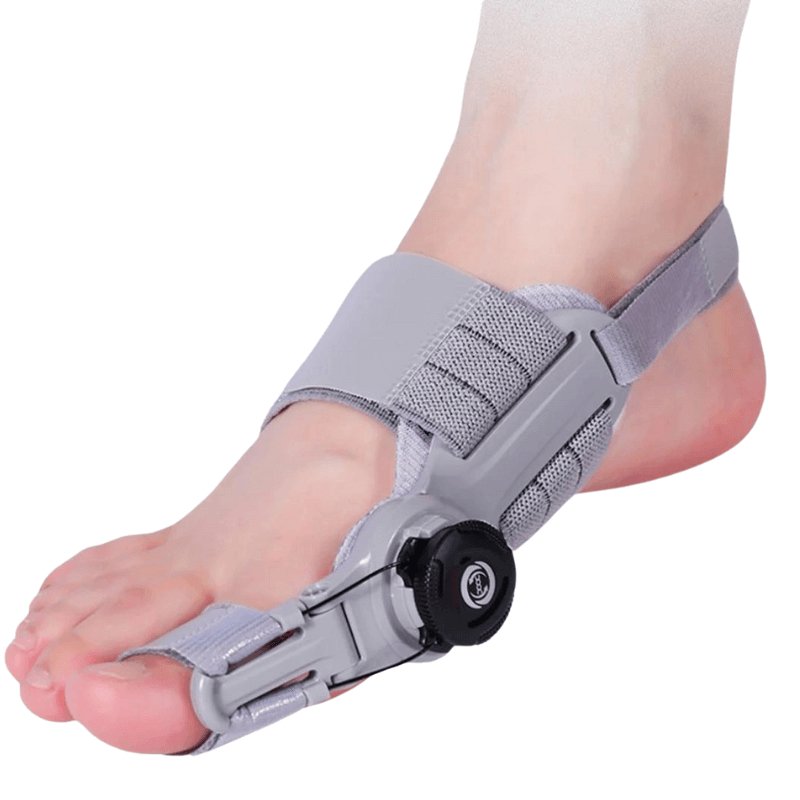Hallux Rigidus: Symptoms, Causes, and Treatment

Hallux rigidus, also known as stiff big toe joint, is a form of osteoarthritis that affects the joint at the base of the big toe. This article reviews the most common symptoms, causes, and treatment options for hallux rigidus.
Background and Symptoms: What is Hallux Rigidus?
Hallux rigidus is a degenerative condition that affects the metatarsophalangeal joint of the big toe, leading to stiffness and limited mobility. It is a form of osteoarthritis that gradually worsens over time if left untreated. The condition is characterized by changes in the function and structure of the big toe joint and is one of the most common ailments affecting the foot. Unlike hallux valgus, where the big toe points inward, hallux rigidus primarily involves stiffness and reduced mobility.
Sick Leave and Self-Care: Symptoms of Hallux Rigidus
Common symptoms include:
- Stiffness and pain in the big toe's metatarsophalangeal joint
- Difficulty bending the big toe upward or downward
- Swelling and inflammation around the joint
- Pain while walking, especially when pushing off with the toe
- Development of bone spurs (osteophytes) on the top side of the joint
The condition can often lead to discomfort during weight-bearing activities, particularly when wearing regular shoes. Hallux rigidus images from X-ray examinations often show changes in the joint surface and bone spurs as a result of the disease.
Investigation and Care Level: Causes of Hallux Rigidus
Several factors may contribute to the development of hallux rigidus:
- Overuse of the big toe joint
- Previous injuries or trauma to the big toe
- Genetic factors affecting foot structure
- Certain types of inflammatory arthritis
- Misalignment in the foot, such as flatfoot or high arch
The diagnosis primarily relies on a clinical examination, but for an accurate assessment, doctors often need to take X-rays to see the extent of joint changes. Prolonged and repeated stress can worsen the condition over time.
Diagnosis and Treatment of Hallux Rigidus: What Applies to Referral and Surgery?
| Diagnostic method | Treatment options | Benefits of Toe Comfort™ |
|---|---|---|
| Physical examination | Anti-inflammatory drugs | Provides support and adjustment of the big toe |
| X-ray | Physiotherapy and stretching | Helps reduce pain and stiffness |
| MRI if necessary | Orthopedic shoes or inserts | Improves foot position and function |
| Gait analysis | Taping of the big toe | Can be used daily for continuous treatment |

Hallux Rigidus and ToeComfort™: Effective Adjustment and Treatment
ToeComfort™ from Komforten offers several benefits for individuals with hallux rigidus:
- Applies advanced adjustment treatment to gradually improve the position of the big toe
- Helps reduce inflammation and pain in the big toe joint
- Can be used regularly to maintain joint mobility
- Non-invasive option that can complement other treatment methods
- Adjustable design that fits various foot sizes and degrees of hallux rigidus
Hallux rigidus training and hallux rigidus exercises are important parts of the treatment and can be combined with the use of ToeComfort™ for optimal pain relief and improved function.
Buy nowConclusion: Summary and Ongoing Care
Hallux rigidus is a progressive condition that can cause significant pain and disability if left untreated. By combining medical treatment, lifestyle changes, and the use of supportive aids like TåKomforten™, many individuals can effectively manage their symptoms and improve the function of the big toe. It is important to consult a doctor or foot specialist for an accurate diagnosis and individualized treatment plan.
Frequently Asked Questions (FAQ)
Can hallux rigidus be completely cured?
Although hallux rigidus cannot be completely cured, the symptoms can often be effectively managed with the right treatment and aids.
How long should I use TåKomforten™ daily?
It is recommended to use TåKomforten™ for 30 minutes daily, but consult a foot specialist for personal recommendations.
Can taping the big toe help with hallux rigidus?
Is surgery necessary for hallux rigidus?
Surgery is usually only considered in severe cases where conservative treatment has not provided sufficient relief.
Can I still exercise with hallux rigidus?
Yes, but it is important to choose low-impact activities and wear appropriate shoes. Consult a physiotherapist for tailored exercise recommendations.
